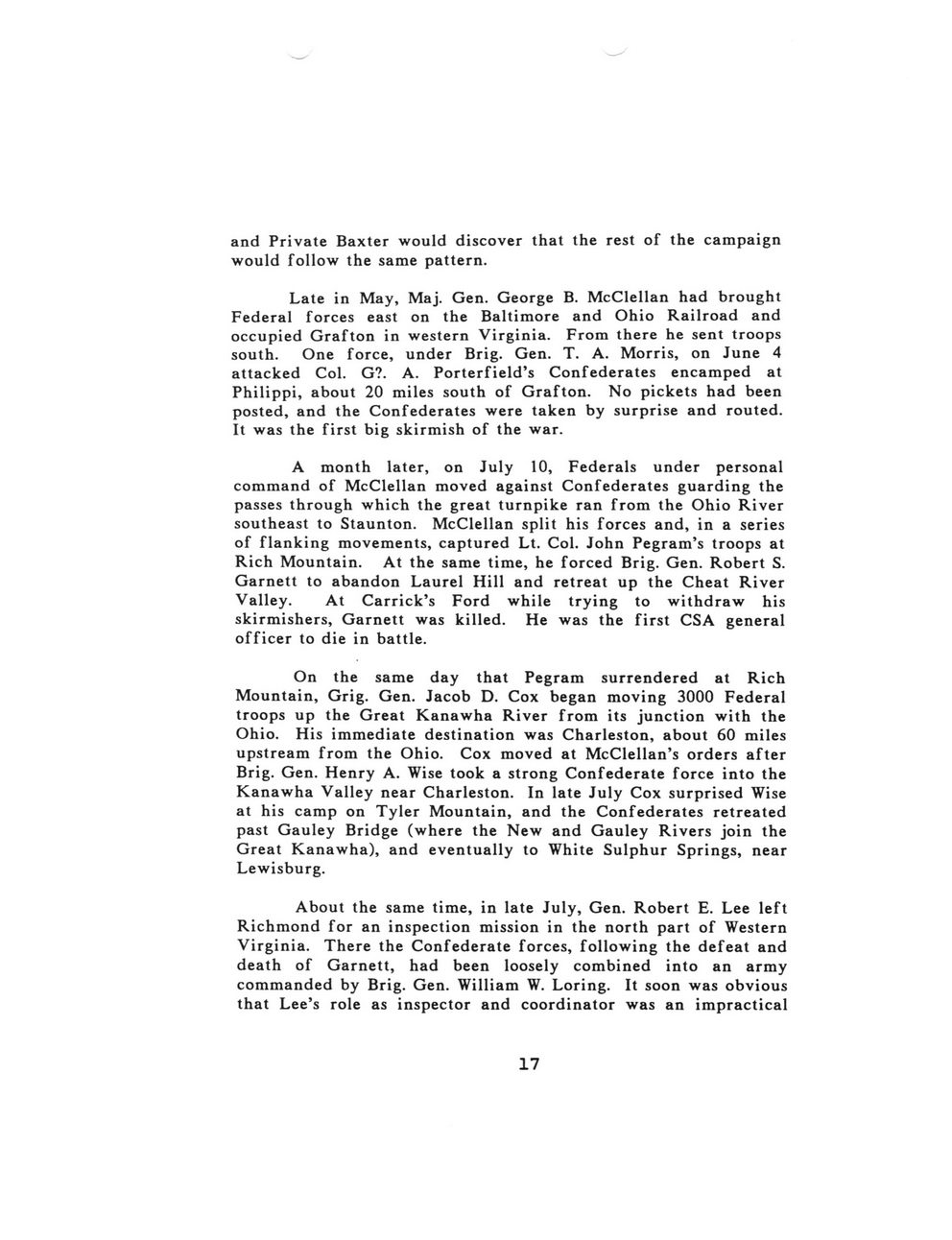This text was obtained via automated optical character recognition.
It has not been edited and may therefore contain several errors.
and Private Baxter would discover that the rest of the campaign would follow the same pattern. Late in May, Maj. Gen. George B. McClellan had brought Federal forces east on the Baltimore and Ohio Railroad and occupied Grafton in western Virginia. From there he sent troops south. One force, under Brig. Gen. T. A. Morris, on June 4 attacked Col. G?. A. Porterfield?s Confederates encamped at Philippi, about 20 miles south of Grafton. No pickets had been posted, and the Confederates were taken by surprise and routed. It was the first big skirmish of the war. A month later, on July 10, Federals under personal command of McClellan moved against Confederates guarding the passes through which the great turnpike ran from the Ohio River southeast to Staunton. McClellan split his forces and, in a series of flanking movements, captured Lt. Col. John Pegram?s troops at Rich Mountain. At the same time, he forced Brig. Gen. Robert S. Garnett to abandon Laurel Hill and retreat up the Cheat River Valley. At Carrick?s Ford while trying to withdraw his skirmishers, Garnett was killed. He was the first CSA general officer to die in battle. On the same day that Pegram surrendered at Rich Mountain, Grig. Gen. Jacob D. Cox began moving 3000 Federal troops up the Great Kanawha River from its junction with the Ohio. His immediate destination was Charleston, about 60 miles upstream from the Ohio. Cox moved at McClellan?s orders after Brig. Gen. Henry A. Wise took a strong Confederate force into the Kanawha Valley near Charleston. In late July Cox surprised Wise at his camp on Tyler Mountain, and the Confederates retreated past Gauley Bridge (where the New and Gauley Rivers join the Great Kanawha), and eventually to White Sulphur Springs, near Lewisburg. About the same time, in late July, Gen. Robert E. Lee left Richmond for an inspection mission in the north part of Western Virginia. There the Confederate forces, following the defeat and death of Garnett, had been loosely combined into an army commanded by Brig. Gen. William W. Loring. It soon was obvious that Lee?s role as inspector and coordinator was an impractical 17

Baxter, Marion Francis Marion-Francis-Baxter-Bio.-017